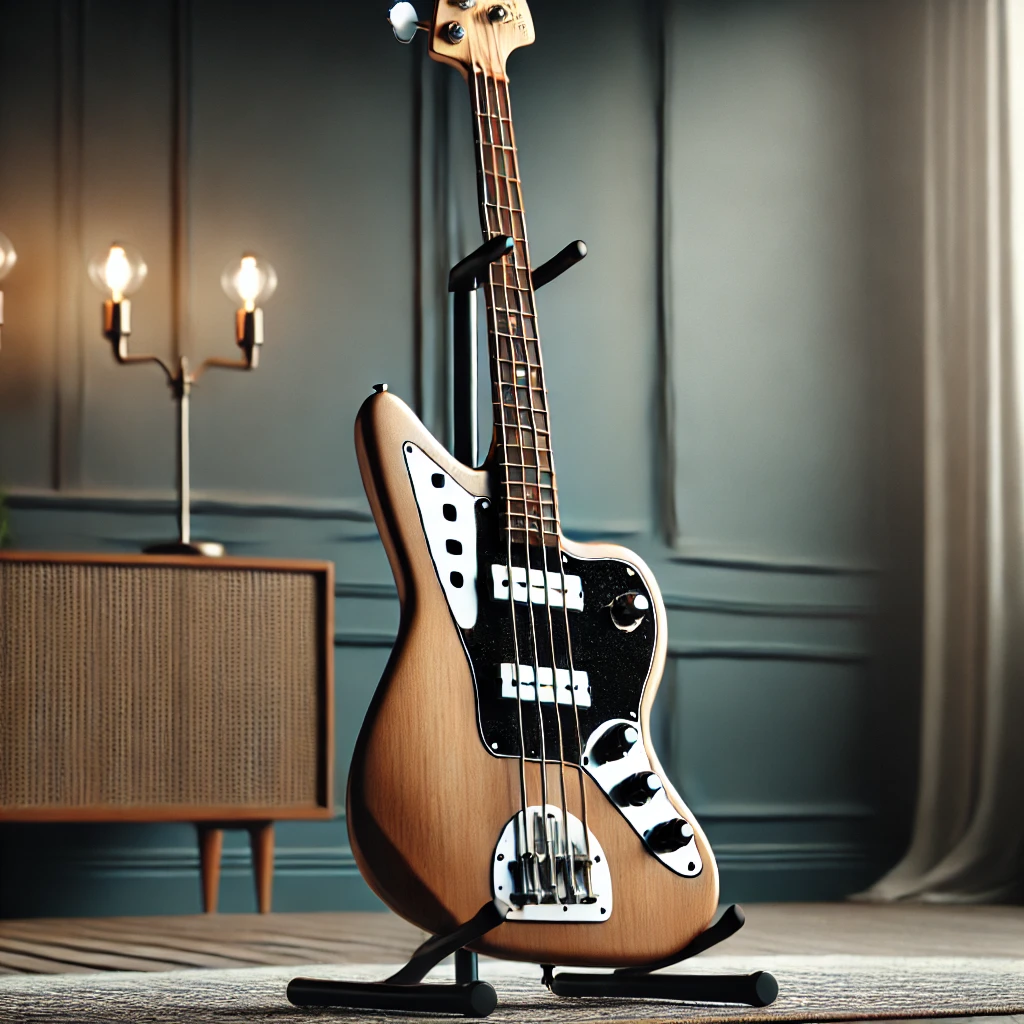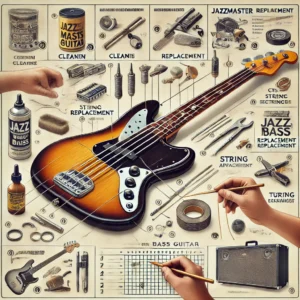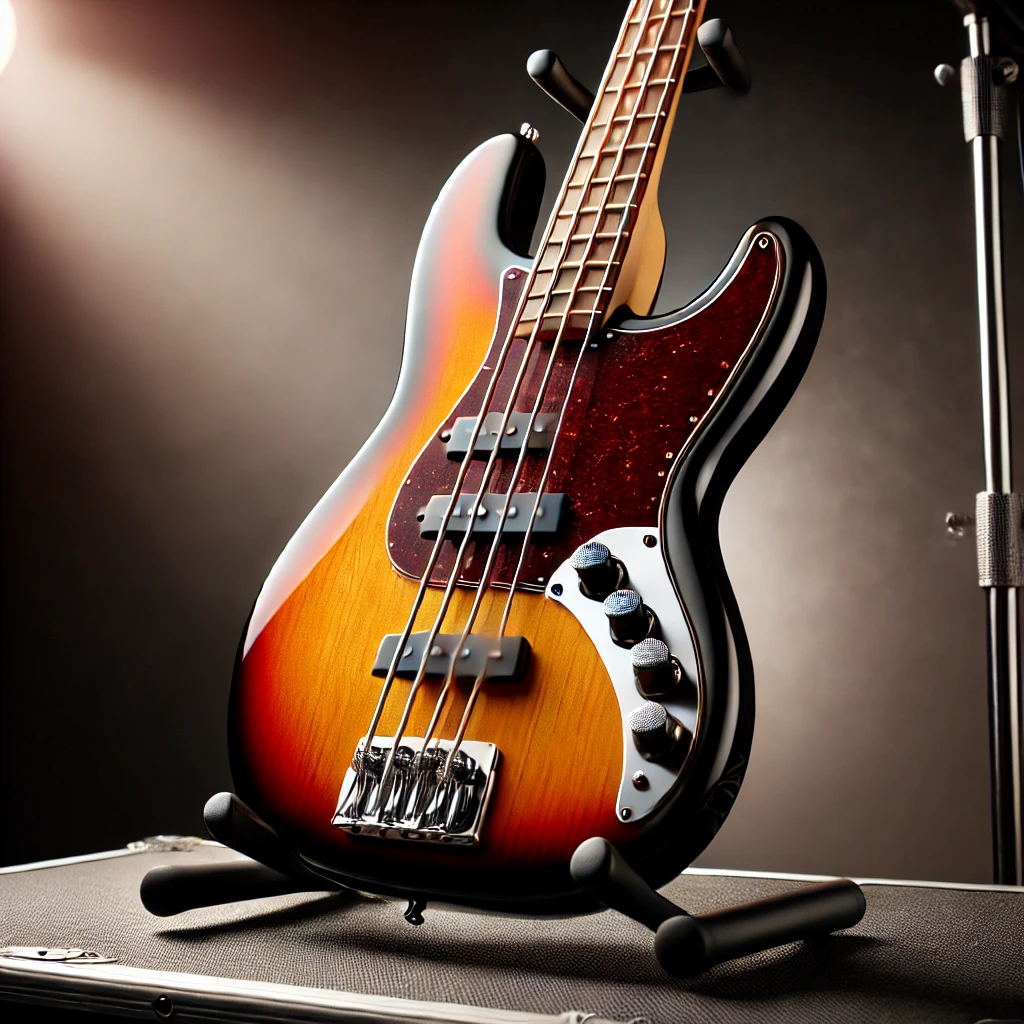The Alluring World of Jazzmaster Bass Guitars 🎸
When it comes to iconic bass guitars that have shaped the sound of modern music, the Jazzmaster bass stands tall among legends. As a passionate bassist who’s spent countless hours exploring different instruments, I can confidently say that a Jazzmaster bass offers something truly special. The distinctive tone, comfortable playability, and versatile sound profile make it a favorite among professionals and enthusiasts alike. Whether you’re just starting your musical journey or looking to add another quality instrument to your collection, understanding what makes the Jazzmaster bass unique is essential for making an informed decision.
In today’s comprehensive guide, we’ll dive deep into everything you need to know about Jazzmaster bass guitars. From their fascinating history to practical buying advice, we’ve got you covered with expert insights and recommendations. Let’s explore why these remarkable instruments continue to captivate bassists across genres and generations.
The Rich History of Jazzmaster Bass: Evolution of an Icon ⏳
The story of the Jazzmaster bass is intertwined with the broader history of electric bass guitars. While many bass enthusiasts know that Fender’s Jazzmaster design was originally famous for guitars, the bass variants have developed their own passionate following.
From Guitar to Bass: The Origin Story
Fender first introduced the Jazzmaster guitar in 1958 as a premium option designed to appeal to jazz musicians. However, it was the alternative rock scene of the late 1980s and 1990s that truly embraced the Jazzmaster aesthetic and sound. Following this renewed interest, bass variations inspired by the Jazzmaster design began to emerge.
✅ Did you know? The original Jazzmaster was actually designed to compete with Gibson’s high-end hollow body electric guitars, but instead found its niche in surf rock and later alternative music scenes.
Unlike the traditional Precision and Jazz Bass models, Jazzmaster-inspired basses typically feature offset bodies that provide excellent balance whether playing standing or sitting. This ergonomic design has become one of the hallmark features that players appreciate about these instruments.
The Modern Jazzmaster Bass Renaissance
In recent years, we’ve witnessed a significant resurgence in the popularity of Jazzmaster-style basses. This revival can be attributed to several factors:
- The growing influence of indie and alternative music
- Professional bassists showcasing these instruments on major tours
- Manufacturers offering more affordable options without compromising quality
- The distinctive aesthetic appealing to players seeking something beyond traditional designs
Today’s market offers everything from budget-friendly models to high-end custom shop creations that capture the essence of the Jazzmaster design philosophy while incorporating modern features for contemporary players.

7 Standout Features of the Jazzmaster Bass 🔍
What exactly makes the Jazzmaster bass so special? Let’s break down the key features that contribute to its distinctive character and appeal.
1. Offset Body Design for Superior Comfort 🛋️
The most immediately recognizable feature of a Jazzmaster bass is its offset waist body design. Unlike symmetrical body shapes, this ergonomic contour:
- Balances weight more evenly across your body
- Reduces strain during long playing sessions
- Sits comfortably whether you’re standing or seated
- Provides easy access to upper frets
I’ve found that this body shape makes a noticeable difference during extended rehearsals or gigs. The way the instrument naturally rests against your body encourages better posture and reduces the fatigue that can come from playing for hours.
2. Versatile Pickup Configurations for Sonic Flexibility 🎚️
Jazzmaster basses typically feature unique pickup configurations that set them apart from more traditional instruments. Depending on the specific model, you might find:
- Split-coil pickups for punchy, defined tones
- Single-coil pickups that deliver bright, articulate sounds
- Humbucker options for thicker, more powerful output
- Blendable pickup systems for maximum tonal control
This versatility means you can dial in sounds suitable for virtually any genre, from funk and R&B to rock and metal. The ability to seamlessly transition between different tonal characters makes these instruments particularly valuable for session musicians and players in cover bands.
3. Distinctive Tonal Character with Amazing Midrange 🔊
The Jazzmaster bass has a sonic signature that many players describe as having:
- Rich, well-defined midrange presence
- Excellent note separation and clarity
- Warm fundamental tones with pleasing harmonics
- Good balance between punch and resonance
This tonal profile allows the instrument to sit perfectly in a mix, providing the foundation needed while still allowing individual notes and phrases to be clearly heard. For recording purposes, this characteristic is particularly valuable as it requires less processing to achieve a professional sound.
4. Premium Hardware for Enhanced Performance and Durability ⚙️
Quality hardware is essential for any professional instrument, and Jazzmaster basses typically excel in this department with features like:
- High-mass bridges for improved sustain
- Precision-machined tuning machines for stable tuning
- Durable switching systems for reliable operation
- Quality potentiometers for smooth control
These components contribute significantly to both the playability and longevity of the instrument. When investing in a bass that will potentially serve you for decades, the quality of these seemingly small parts makes a big difference in the overall experience.
5. Neck Profiles That Support Various Playing Styles 👐
The neck is where your hands spend all their time, making it perhaps the most critical element of any bass guitar. Jazzmaster basses typically offer:
- Modern C-shaped profiles that suit a wide range of hand sizes
- Comfortable satin finishes that prevent stickiness during performance
- Compound radius options on premium models for ideal playability
- Well-finished frets that facilitate smooth position shifts
Whether you prefer the precision of fingerstyle playing or the aggression of pick technique, these necks adapt seamlessly to your approach without imposing limitations.
6. Aesthetic Appeal with Undeniable Stage Presence 🌟
Let’s be honest—looks matter when it comes to musical instruments. The Jazzmaster bass features:
- Elegant contours that catch stage lighting
- Distinctive headstock designs that stand out
- Various finish options from classic to contemporary
- Unique pickguards that complete the visual package
While tone and playability should always be primary considerations, the visual impact of these instruments adds another dimension to your performance. A Jazzmaster bass makes a statement before you even play a note.
7. Excellent Resonance and Sustain Properties 🔄
The combination of wood selection, body design, and hardware implementation gives these instruments remarkable:
- Natural sustain that allows notes to bloom fully
- Even resonance across all registers
- Reduced dead spots compared to many competitors
- Consistent response regardless of playing position
This translates to an instrument that feels alive in your hands, responding dynamically to every nuance of your playing style and encouraging musical exploration.

Top Jazzmaster Bass Models Worth Your Attention in 2025 🏆
The market offers several outstanding Jazzmaster bass models across different price points. Here are some of the most impressive options currently available:
Premium Tier: Professional-Grade Instruments
For serious musicians seeking the absolute best in craftsmanship and tone:
- Fender American Professional II Jaguar Bass stands as the premier option from Fender’s lineup, featuring proprietary V-Mod II pickups, a slim “C” profile neck, and premium tonewoods. The rolled fingerboard edges provide exceptional comfort for extended playing sessions.
- Fender American Ultra Precision Bass combines traditional P-Bass tone with Jazzmaster-inspired body contours and ultra-noiseless pickups for maximum versatility in studio environments.
- Fender American Original ’60s Jazz Bass offers vintage-accurate specifications with modern playability, capturing the essence of the classic offset design while delivering reliable performance.
Mid-Range: Excellent Quality Without Breaking the Bank
For working musicians and dedicated enthusiasts:
- Fender Player Jaguar Bass delivers the offset body design with a modern feel, featuring powerful humbucking pickups and a comfortable modern C-shaped neck at a more accessible price point.
- Squier Classic Vibe Jaguar Bass provides impressive quality at its price point, with vintage-inspired appointments and a sound that punches well above its weight class.
Budget-Friendly: Great Options for Beginners and Backup Instruments
For those just starting out or looking for a reliable second instrument:
- Squier Affinity Series Jaguar Bass H offers the distinctive offset look and surprisingly good tone at an entry-level price, making it ideal for beginners or as a backup instrument.
- Ibanez TMB100 Talman Bass features Jazzmaster-inspired body contours with active EQ for enhanced tonal flexibility, all at a price point that’s accessible to most players.
Comparison Table: Finding Your Perfect Match
| Model | Price Range | Pickups | Best For | Standout Feature |
|---|---|---|---|---|
| Fender American Professional II Jaguar Bass | $1,699-1,899 | V-Mod II Single-Coil | Professional Recording/Touring | Super-Natural Neck Finish |
| Fender American Ultra Precision Bass | $1,899-2,099 | Ultra Noiseless | Studio Work | Tapered Neck Heel |
| Fender American Original ’60s Jazz Bass | $1,999-2,199 | Vintage-Style | Vintage Tone Seekers | Period-Correct Details |
| Fender Player Jaguar Bass | $799-899 | Player Series Alnico | Gigging Musicians | Value to Performance Ratio |
| Squier Classic Vibe Jaguar Bass | $399-479 | Alnico Single-Coils | Intermediate Players | Vintage Aesthetics |
| Squier Affinity Series Jaguar Bass H | $229-279 | Ceramic Humbucker | Beginners | Accessibility |
| Ibanez TMB100 Talman Bass | $199-249 | Dynamix P/J | Budget-Conscious | Active EQ |
🔥 Ready to elevate your bass playing? These exceptional instruments are just a click away! Check out the latest pricing and availability on Amazon to find your perfect musical partner today.

How to Choose the Right Jazzmaster Bass for Your Needs 🤔
Selecting the perfect instrument requires considering several important factors:
Understanding Your Musical Style Requirements
Different genres demand different tonal characteristics:
- Rock and Metal: Look for models with humbuckers or high-output pickups that can deliver punch and definition
- Jazz and Fusion: Consider instruments with greater tonal flexibility through blendable pickup systems
- Funk and R&B: Select options with bright, articulate single-coil pickups
- Recording Work: Prioritize versatility with models offering multiple switching options
Your primary musical context should heavily influence which features matter most to you.
Scale Length Considerations
Jazzmaster-inspired basses come in different scale lengths, each with distinct advantages:
- Long scale (34″): The standard for most bass guitars, offering familiar tension and tone
- Medium scale (32″): Easier playability with slightly warmer tone
- Short scale (30″): More comfortable for players with smaller hands or guitarists transitioning to bass
Each scale length creates a different feel and slightly different tonal character, so try several if possible before making your decision.
Passive vs. Active Electronics
This fundamental choice affects both sound and practicality:
✅ Passive systems offer:
- More organic, traditional tone
- No need for batteries
- Simpler maintenance
- More dynamic response to playing technique
✅ Active systems provide:
- Greater output level
- Enhanced EQ control
- Boosted presence and clarity
- Consistent performance with longer cable runs
Consider how much sound shaping you prefer to do at the instrument versus through amplification and effects.
Construction Quality Indicators
When evaluating any bass guitar, pay attention to:
- Fretwork quality: Look for smooth edges and consistent height
- Neck stability: Check for straightness and proper relief
- Hardware durability: Ensure tuners operate smoothly with minimal backlash
- Electronics reliability: Test all switches and controls for noise-free operation
- Finish application: Examine for consistent application and proper buffing
These factors directly impact playability, tone, and long-term reliability.
Playing Techniques That Shine on a Jazzmaster Bass 🎵
The distinctive characteristics of Jazzmaster basses make them particularly well-suited to certain playing approaches:
Fingerstyle Techniques
The balanced tonal profile of these instruments highlights the nuances of fingerstyle playing:
- Traditional alternating technique benefits from the clear articulation these basses provide
- Three-finger approaches (as popularized by players like Gary Willis) translate exceptionally well
- Palm muting techniques produce particularly satisfying results due to the resonant qualities of the body design
I’ve found that these basses respond beautifully to subtle variations in right-hand positioning, allowing for significant tonal control without adjusting any knobs.
Pick Techniques
For players who prefer plectrums:
- Heavy picks (1mm+) bring out the powerful fundamental tones
- Medium picks (0.6-0.8mm) offer a good balance of attack and warmth
- Lighter picks can achieve almost fingerstyle-like tones while maintaining consistency
The neck profiles typically found on these instruments support comfortable hand positioning for fast alternate picking passages.
Slap and Pop Techniques
While not traditionally associated with offset basses, modern Jazzmaster-inspired instruments can handle slap techniques remarkably well:
- The generous upper bout provides comfortable thumb positioning
- Bright pickups capture the percussive elements clearly
- Well-balanced strings allow for consistent popping technique
With some EQ adjustments, these basses can deliver convincing slap tones that cut through any mix.

Maintenance Tips for Keeping Your Jazzmaster Bass in Perfect Condition 🧰
Proper maintenance ensures your instrument will provide years of reliable service:
Regular Cleaning Routine
Develop a habit of basic cleaning after each playing session:
- Wipe down the strings with a clean cloth
- Remove fingerprints from the body and neck
- Pay special attention to areas where sweat accumulates
- Use appropriate polishes sparingly and only when needed
This simple routine prevents the buildup of corrosive elements and preserves both the appearance and functionality of your instrument.
Seasonal Setup Adjustments
As environmental conditions change throughout the year:
- Monitor neck relief and adjust the truss rod as needed
- Check action height when humidity fluctuates significantly
- Examine intonation after string changes or seasonal shifts
- Inspect nut slots for proper string movement
These periodic adjustments maintain optimal playability and prevent potentially damaging stress on the instrument.
Electronics Maintenance
To ensure noise-free operation:
- Periodically clean potentiometers with contact cleaner
- Check all solder joints if intermittent issues develop
- Clean jack connections to prevent signal loss
- Consider shielding the control cavity if noise becomes problematic
Preventative maintenance of electronics saves you from frustrating failures during important performances or recording sessions.
Famous Bassists Who Have Embraced Jazzmaster-Style Basses 🌠
Several influential players have helped popularize these distinctive instruments:
Alternative and Indie Rock Icons
The offset aesthetics and unique tones have made these basses favorites in alternative circles:
- Kim Gordon (Sonic Youth) helped define the sound of noise rock with her Fender Jazzmaster-inspired basses
- Krist Novoselic (Nirvana) occasionally played offset basses during the band’s meteoric rise
- Nate Mendel (Foo Fighters) has utilized Jazzmaster-influenced basses for their distinctive midrange presence
These artists demonstrated how these instruments could deliver both musical foundation and sonic experimentation.
Jazz and Fusion Innovators
Despite their association with alternative genres, these basses have found homes in more technical musical contexts:
- Christian McBride has occasionally performed with offset-design basses in his jazz ensembles
- Thundercat (Stephen Bruner) has used custom offset basses for his genre-defying performances
Their adoption by such technically accomplished players speaks to the versatility and musicality of these instruments.
Jazzmaster Bass FAQs: Everything You’ve Wanted to Know 💬
Let’s address some of the most common questions about these distinctive instruments:
Are Jazzmaster basses good for beginners?
Absolutely. While some premium models represent significant investments, brands like Squier offer excellent entry-level options with the distinctive offset design. The comfortable body contours and balanced weight distribution actually make them ideal for new players still developing proper technique.
How do Jazzmaster basses compare to Precision basses?
The main differences include:
- Body shape: Jazzmaster/Jaguar basses feature offset waists versus the symmetrical P-Bass design
- Tonal character: Jazzmaster variants typically offer brighter, more articulate sounds with pronounced midrange
- Pickup configurations: More varied options compared to the traditional split-coil P-Bass pickup
- Ergonomics: Generally more contoured body shapes for improved comfort
Each has its strengths, and many professional bassists own both for different musical situations.
What makes the Jazzmaster bass worth its price?
The value proposition comes from:
- Superior ergonomics for long playing sessions
- Distinctive tonal character that stands out in a mix
- Versatile sound-shaping capabilities
- Unique aesthetic appeal on stage
- Growing collectibility as these designs gain popularity
When considering the decades of use you’ll get from a quality instrument, the investment becomes much more reasonable on a per-year basis.
Can Jazzmaster basses handle heavy styles like metal?
Yes, with the right setup. Models equipped with humbucking pickups or active electronics can deliver the punch and clarity needed for aggressive styles. The clear articulation actually makes them excellent for technical metal styles where note definition is crucial.
What string gauges work best on Jazzmaster basses?
This depends on several factors:
- Standard 34″ scale models work well with traditional .045-.105 sets
- Shorter scale versions may benefit from slightly heavier gauges (.050-.110)
- Consider balanced tension sets for the most even feel across all strings
Experimenting with different string types and gauges is one of the most cost-effective ways to personalize your instrument’s feel and sound.
Accessories That Enhance Your Jazzmaster Bass Experience 🎒
The right accessories can significantly improve your playing experience:
Cases and Gig Bags
Protect your investment with appropriate carrying solutions:
- Gator G-PG-BASS ProGo Ultimate Gig Bag provides exceptional protection with its combination of rigid internal structure and dense padding, plus convenient backpack straps for comfortable transport.
- Fender Deluxe Molded Bass Case offers traditional hardshell protection with plush interior lining specifically designed to accommodate offset body shapes.
Straps for Comfort
Given the longer playing sessions these comfortable instruments encourage:
- Levy’s Leathers PM32 Garment Leather Bass Strap combines premium materials with ergonomic weight distribution, reducing shoulder fatigue during extended performances.
- KLIQ AirCell Guitar Strap features patented air-filled cells that significantly reduce perceived instrument weight during long gigs.
Amplification Partners
Certain amplifiers particularly complement the tonal characteristics of Jazzmaster basses:
- Fender Rumble 500 Bass Combo Amplifier provides versatile tone-shaping capabilities that enhance the natural character of offset basses while delivering professional volume levels.
- Ampeg PF-350 Portaflex Bass Amp Head paired with a suitable cabinet offers the classic Ampeg tone that works beautifully with the midrange presence of Jazzmaster-style instruments.
Conclusion: Why the Jazzmaster Bass Deserves Your Consideration 🏁
The Jazzmaster bass represents a perfect blend of innovative design, superior ergonomics, and distinctive tone that sets it apart in today’s crowded instrument market. Whether you’re drawn to its unique aesthetic, comfortable playability, or versatile sound, this iconic design offers something special for bassists at every level.
As we’ve explored throughout this guide, these instruments excel across various musical contexts while providing the reliability professional musicians demand. Their growing popularity ensures good resale value should your needs change, though many players find these basses become cherished lifelong companions.
If you’re in the market for a new bass guitar that breaks from tradition while delivering exceptional performance, a Jazzmaster-inspired model deserves serious consideration. The combination of playing comfort, tonal flexibility, and undeniable stage presence makes these instruments truly special.
🔥 Don’t miss out on experiencing the incredible playability and tone of a Jazzmaster bass! Click through to Amazon now to explore the latest models and find the perfect instrument to elevate your musical journey.
More FQAs:
❓ What distinguishes the Jazzmaster Bass from other Fender bass models?
✅ The Jazzmaster Bass features an offset waist body design, providing superior comfort and balance during play. Its unique pickup configurations offer a wide range of tonal possibilities, setting it apart from models like the Precision and Jazz Bass. ...
❓ How does the offset body design benefit players?
✅ The offset body design balances weight evenly, reducing strain during extended sessions and ensuring comfortable play whether standing or seated. ...
❓ What pickup configurations are available on the Jazzmaster Bass?
✅ The Jazzmaster Bass offers various pickup configurations, including split-coil, single-coil, and humbucker options, allowing for a versatile range of tones suitable for multiple music styles. ...
❓ Is the Jazzmaster Bass suitable for live performances?
✅ Yes, its ergonomic design and tonal versatility make the Jazzmaster Bass well-suited for live performances, providing both comfort and a diverse sound palette for different musical settings. ...
❓ How does the Jazzmaster Bass cater to different musical genres?
✅ With its adaptable pickup configurations and unique tonal characteristics, the Jazzmaster Bass can seamlessly transition across genres such as funk, R&B, rock, and metal, offering musicians flexibility in their sound. ...
Recommended for You:
- Flatwound Bass Strings: 7 Amazing Benefits for Smooth Playing & Warm Tone
- Electric Stand Up Bass: 7 Incredible Innovations Revolutionizing Modern Bass Playing
- The Ultimate Guide to Bass Saxophone Saxophones 2025: Unleash the Powerful Low End Sound
Disclaimer: This article contains affiliate links. If you purchase products through these links, we may earn a small commission at no additional cost to you.





